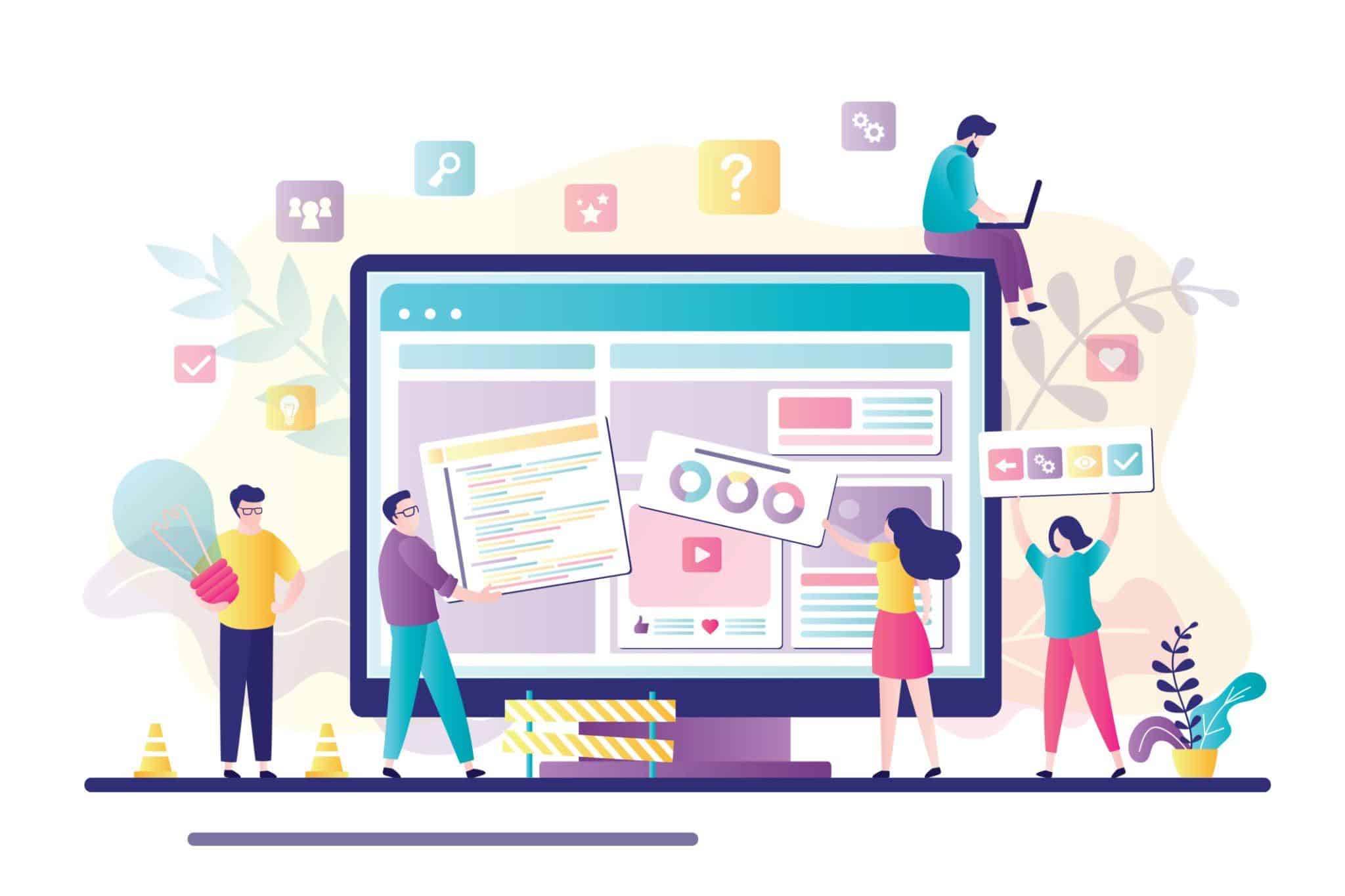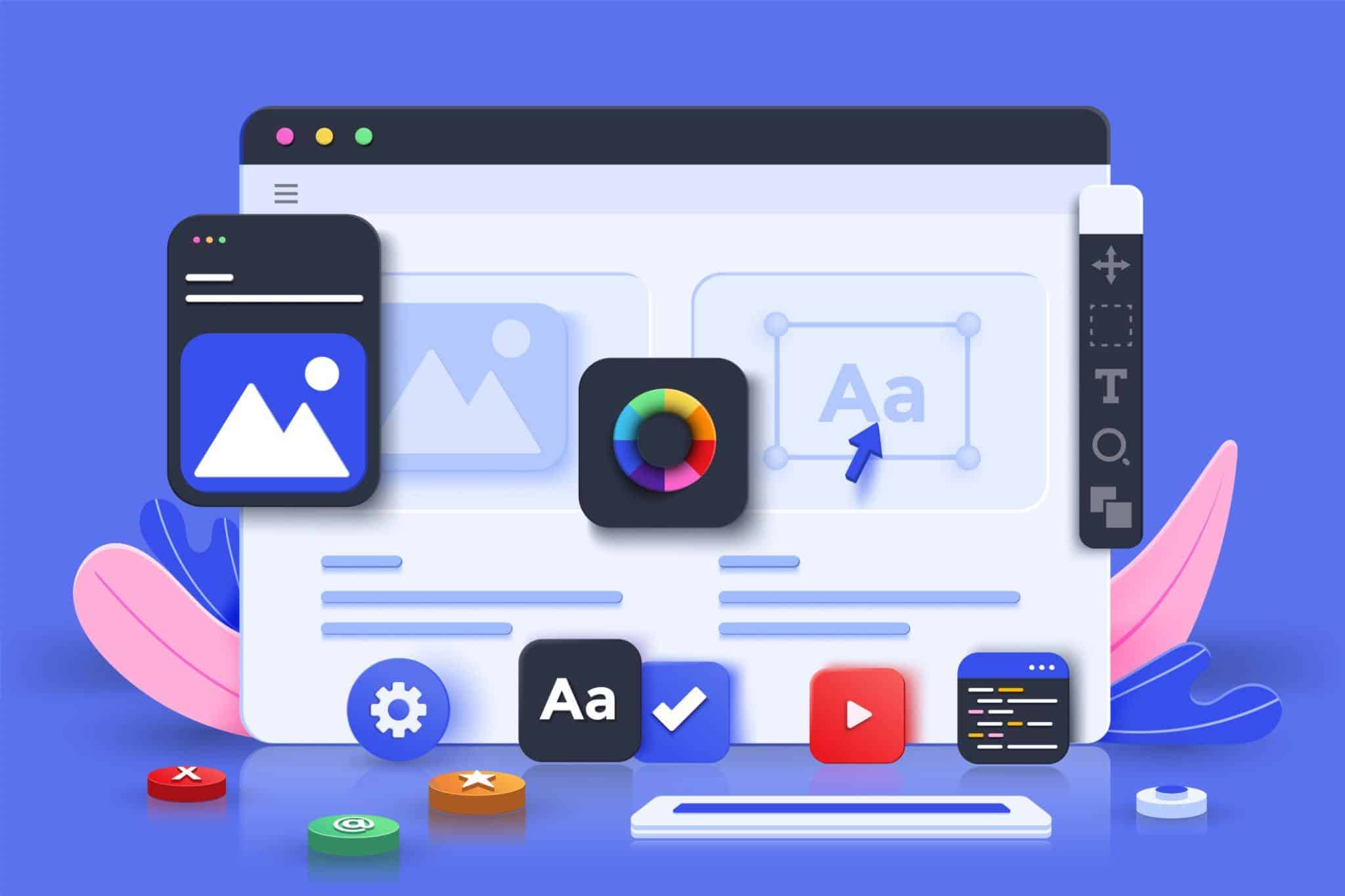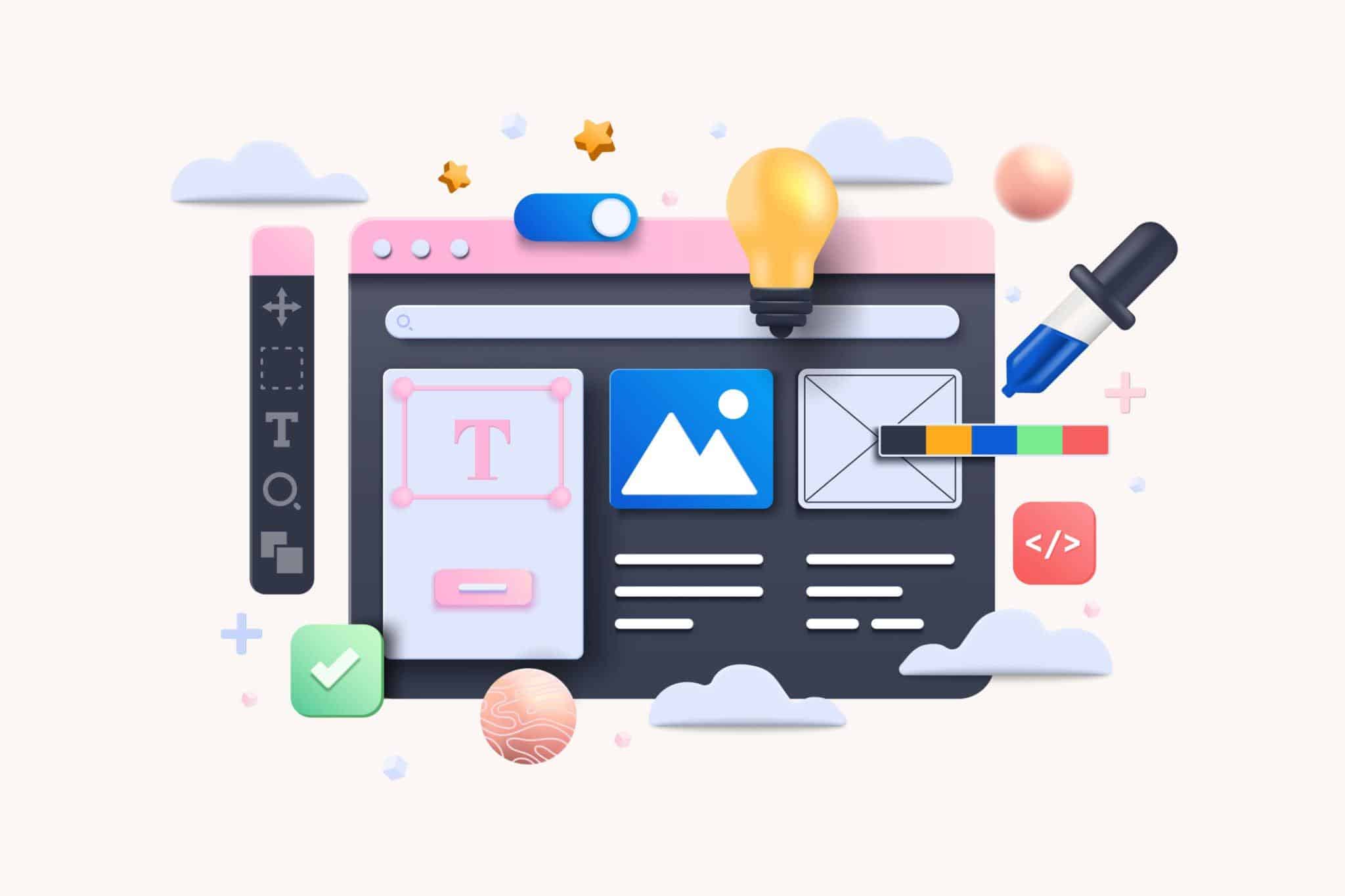In today’s digital world, online presence is crucial for connecting with customers and growing a business. And in most cases, creating that online presence starts with a website. But before you launch into website creation, it’s important to understand the distinct roles of web design and web development. Often, the terms are used interchangeably when they refer to unique processes that require different skill sets.
In simple terms, web design is focused primarily on the user-facing elements – how the site looks and feels to visitors. This refers to the layout, visuals, and front-end creative work.
On the other hand, web development deals with behind-the-scenes technicalities – the codes and back-end development that make a website function. Both are equally vital in crafting an effective online platform.
Knowing these core differences will help set appropriate expectations when assembling a web creation team. It will also allow for smoother collaboration and delivery. So whether you’re building a business website, online portfolio, or ecommerce store, recognize that web design and web development play crucial yet distinct roles.
Table of primary differences between web design and web development
Here is a table outlining the primary differences between web design and web development:
| Category | Web Design | Web Development |
|---|---|---|
| Focus Area | User interface and visual design, how the site appears | Functionality & technical build; how the site works behind the scenes |
| Key Deliverables | Site layouts & page designs, content strategy, visual assets like images, fonts, and color schemes | Site architecture, coding & scripts that power the site, integration with databases, server, software platforms |
| Key Skills Required | Graphic design, UX design, content creation | Extensive coding knowledge (HTML, CSS, Javascript, etc.), backend & server-side programming, database management |
| Primary Tools Used | Design software like Figma, Adobe XD, Photoshop, Illustrator | Code editors, dev frameworks & tools like React, Angular, .NET |
| Key Goal | Craft an appealing, user-friendly site experience aligned to brand identity | Build an efficient, scalable technical infrastructure; ensure smooth site operations |
| Stage in Web Project | In early site planning and continues iteratively to bring visual designs to life | Follows initial design stage to build site functionality prior to and post-launch |

Difference between web design and web development
Design: visuals and user experience
Design plays a crucial role in creating an impactful and user-friendly website. Visuals and user experience are two essential aspects of design that work together to enhance a website’s overall look and functionality.
Visual design focuses on aesthetics, typography, colour schemes, and imagery to create a visually appealing interface. It involves carefully selecting and arranging elements to create a cohesive and pleasing visual experience for the user.
On the other hand, user experience design focuses on optimizing the usability and accessibility of a website. It involves analyzing user behaviour, conducting user research, and implementing intuitive navigation and interaction elements to ensure a seamless and enjoyable browsing experience.
By combining the power of visuals and user experience, web designers can create websites that capture attention and provide a user-friendly interface that keeps visitors engaged and satisfied.
Development: coding and functionality
Development: coding and functionality are the backbone of a website, responsible for bringing design concepts to life and enabling interactive features.
Coding involves writing the necessary markup languages, such as HTML, CSS, and JavaScript, to structure and style the website’s elements. This coding process ensures proper formatting, layout, and responsiveness across devices.
Furthermore, functionality implements dynamic features and interactive elements that enhance user engagement. This may include creating forms databases and integrating APIs to enable functionalities like user registration, search functionality, e-commerce functionality, and more.
Web development requires a deep understanding of coding languages, frameworks, and libraries to ensure seamless functionality and compatibility across various browsers and platforms. The combination of coding and functionality in web development is essential for creating a robust and user-friendly website that meets the business’s and its users’ needs and goals.

Collaborative process for successful websites
A collaborative process is crucial for the success of any website project. It involves effective communication and cooperation between the various stakeholders, such as the client, designers, developers, and content creators. The process begins with gathering requirements and understanding the client’s goals and target audience.
This information serves as a foundation for the design and development stages. Designers work closely with the client to create visually appealing and user-friendly interfaces, while developers bring those designs to life by implementing the necessary functionality.
Regular feedback and iteration are essential throughout the process to ensure that the final product meets the client’s expectations. Collaboration also extends to content creation, as the website’s copywriters and marketers work together to create compelling and SEO-friendly content.
By working collaboratively, all parties can contribute their expertise and ensure that the website effectively represents the client’s brand and achieves its objectives.

Conclusion
In conclusion, while web design and development are closely related, they serve different purposes in creating a website. Web design focuses on aesthetics and user experience, while web development deals with functionality and technical aspects.
Both are integral to the success of a website and require collaboration to bring a website to life. Understanding the differences between these two roles is important for anyone looking to enter the web development or design world. With this knowledge, businesses and individuals can work together to create visually appealing and functional websites that meet the needs of their target audience.
FAQ
How does the skill set required for web design differ from that of web development?
Web design primarily focuses on a website’s visual and aesthetic aspects, including layout, colour schemes, typography, and user experience. Designers must have a creative eye, knowledge of design principles, and proficiency in graphic design software. On the other hand, web development involves a website’s technical implementation and functionality. Developers need expertise in programming languages like HTML, CSS, and JavaScript, as well as knowledge of databases, server-side scripting, and security. While both fields require some overlap in skills, web design leans more towards creativity and user experience, while web development focuses on coding and technical implementation.
What are the main responsibilities of a web designer versus a web developer?
The main responsibilities of a web designer include creating the visual design and layout of a website, selecting colours and fonts, and ensuring a user-friendly and visually appealing experience. They focus on the aesthetics and usability of the website. On the other hand, a web developer is responsible for the technical aspects of website development.
Can a web designer also be a web developer, or are these two distinct roles?
Yes, a web designer can also be a web developer. While these roles are distinct, there is often overlap between the two. A web designer focuses on a website’s visual and user experience, creating the layout, colour scheme, and overall design.






